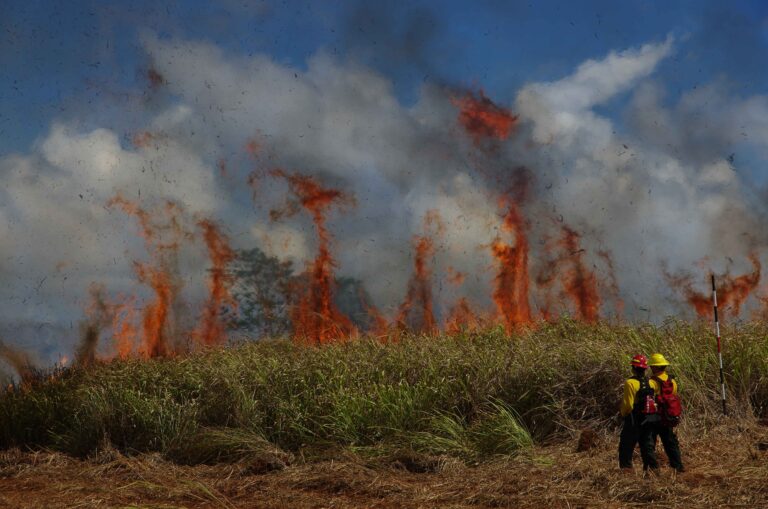Researchers are studying how different varieties of shrubs burn in an effort to provide faster predictions of wildfire threat. The team from Brigham Young University’s Fire Research Lab in Utah used a thermogravimetric analyzer to measure the responsiveness to heat of 14 shrub species endemic to regions in the US prone to wildfires.
Some of the species included in the test were inkberry, wax myrtle, fetterbush, dwarf palmetto and sparkleberry. As the temperature inside the crucible was raised slowly up to a peak of 800°C, the research team studied the speed at which the plant matter broke down and the chemicals produced by the heat.
The study, which was funded by the US Defense Department and published in the Journal of Analytical and Applied Pyrolysis, found that the chemistry of plants is a big factor in how quickly they break down prior to combusting.
The researchers hope that a better understanding of how different vegetation responds to heat will allow them to predict more effectively when a wildfire will propagate.
“Very detailed models that already exist take up to two weeks to run on very big computers and by that time the fire has moved and it’s not in the same place anymore,” study co-author and Brigham Young professor of chemical engineering Thomas H Fletcher told ScienceDaily. “We’re aiming toward giving answers on how a fire might propagate in the next 20 minutes or half hour instead of the next two weeks.”
Wildfires are a growing problem in the US and around the world. In 2018 there were nearly 60,000 wildfires in the US, which destroyed nearly nine million acres of forest, much of it in California.
Siberian wildfires have destroyed 30 million acres since the beginning of 2019, according to Greenpeace. Meanwhile wildfires in the Amazon in 2019 are estimated to have destroyed 2.2 million acres of rainforest.



